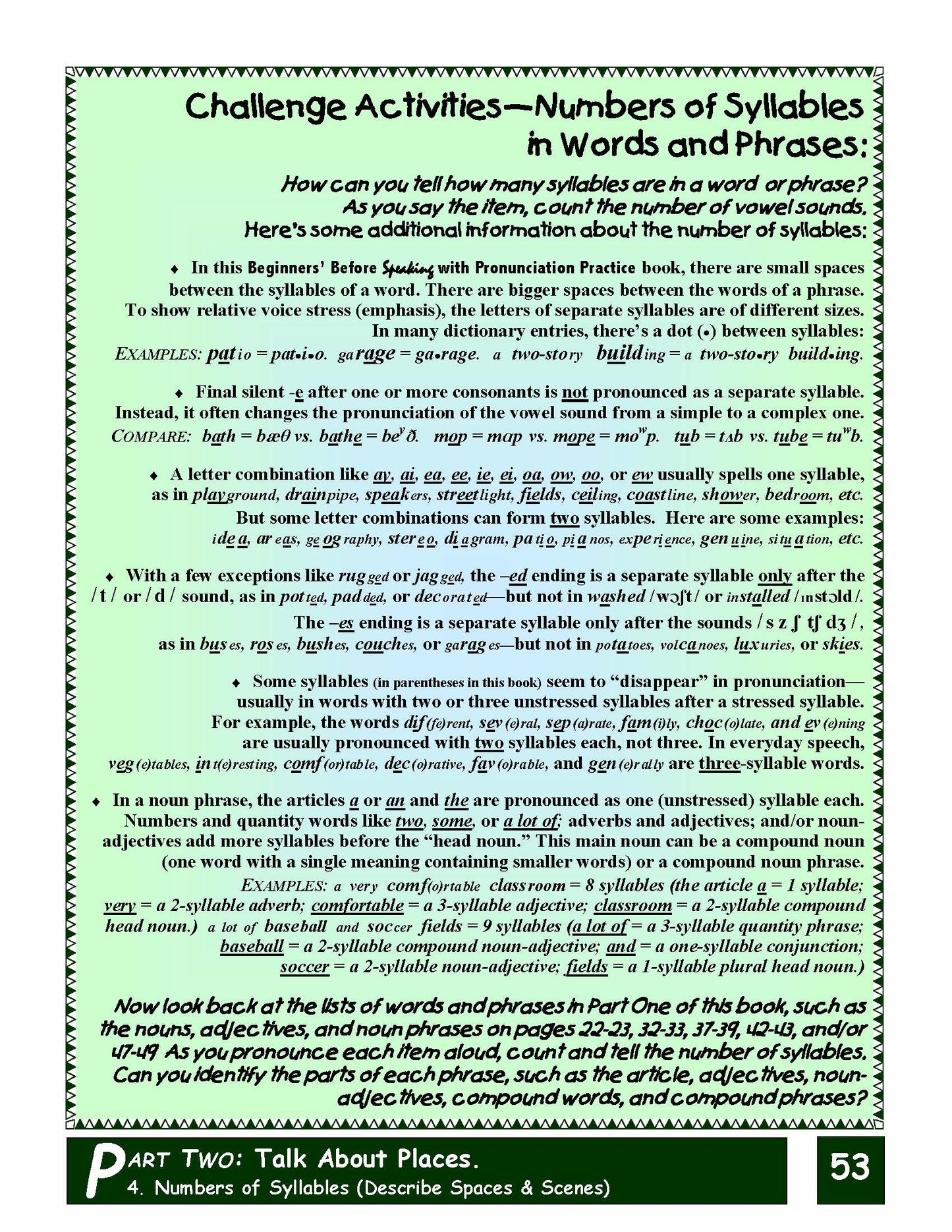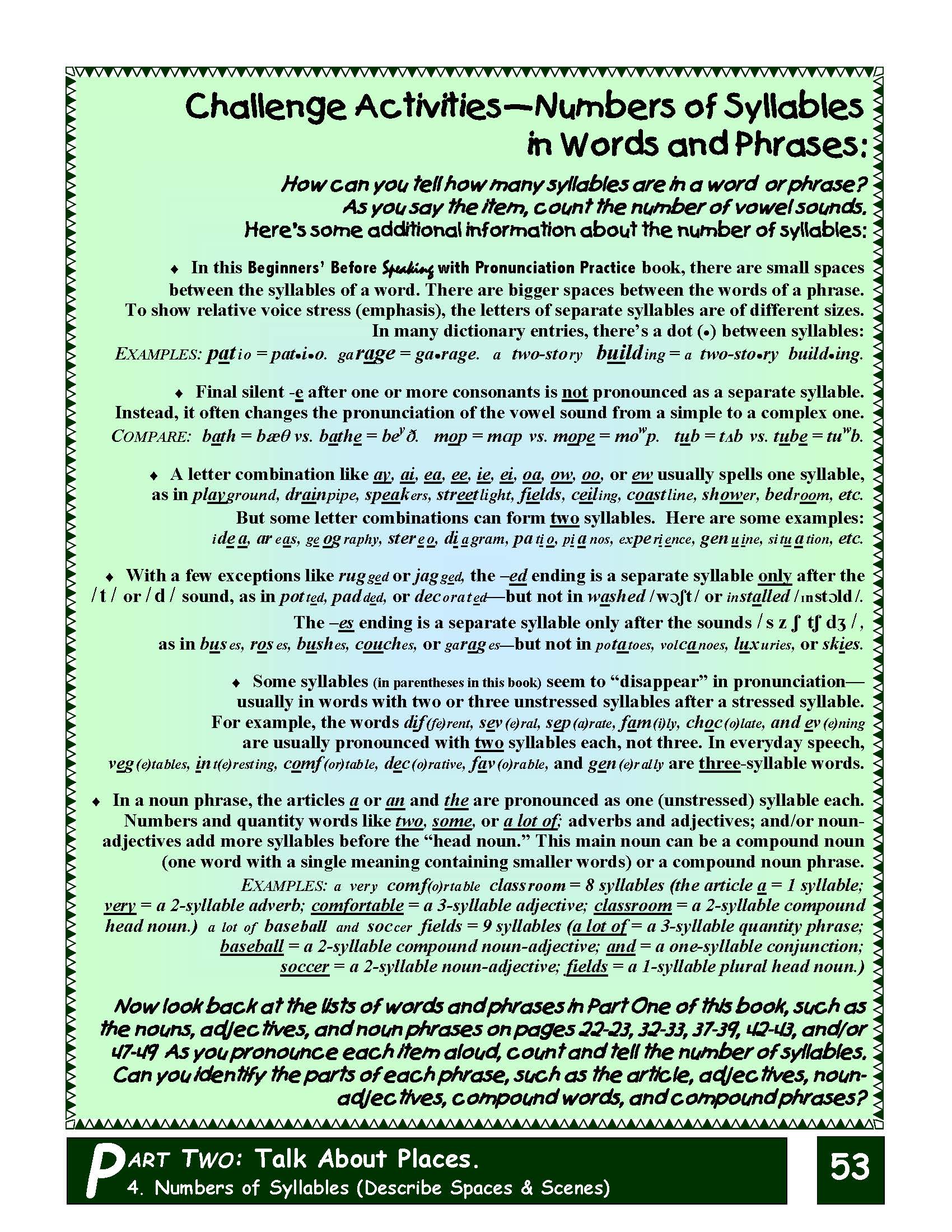Work/Life English
E-02.01 Noting Numbers of Syllables, Get & Use Language for Place Description
E-02.01 Noting Numbers of Syllables, Get & Use Language for Place Description
Part Two-4 (Describe Spaces & Scenes with Numbers of Syllables) from Talk About Places, from Beginners’ Before Speaking with Pronunciation Principles, pages 51-62 + Suggested Language to Use in Activities on pages 15-19 of Answers to Text Exercises
12+5 (17) pages
Who It’s For: American-English Teachers & Helpers of (High) Beginners & Beyond Ready to Improve Their Accents by Discerning & Articulating Syllables
Why It’s Useful: As soon as (new) English speakers can say or read aloud (one-syllable) words by clearly differentiating stressed Vowels, they’re ready to be alert to Syllables (units of speech heard as “beats”). First comes Recognition (Counting) of Numbers of Syllables in the “speech music” of Words & Phrases. It’s instructive and engaging to practice these in common-noun phrasing for Places—and then in Conversations—and descriptions of vivid photos: Interior Spaces, Structures, Outdoor Areas. Challenge Activities help text users improve their speech by “Grouping Words in Phrases with Focal Points.” Attached Answer Key offerings can help with both self-instruction and collaborative learning in groups.
What You’ll Do:
[1] Look over the visuals & listings in the Part Two Opener: Talk About Places. Its pedagogy introduces Numbers of Syllables; Syllable-Stress Patterns; and Stress Rhythm, Pitch, & Intonation. The Vocabulary & Content of its three Divisions 4, 5, 6 are intended to help text users Describe Spaces & Scenes, Tell the Locations of Places, and Get & Give Directions.
[2] Read and incorporate the coaching in “Numbers of Syllables in Words & Phrases” plus “the Spelling & Pronunciation of Vowel Sounds in Multi-Syllable Words.” When doing Vocabulary-based Exercises, pay particular attention to the clear (vs. reduced) articulation of separate syllables. Following indications of Syllable Stress in Conversations about Places, practice their cadence in fluent speech. Do the same with given—and your own—vocabulary in Describing Interior Spaces A-D, Structures E-H, and Outdoor Areas I-L. Part Two-4 ends with “advanced” instruction in a particularly under-addressed technique for expressive speech: Grouping Words in Phrases with Focal Points.
[3] Correct Answers (Numbers of Syllables) and Examples of Conversations to Describe Places complete Download 02.01. On pages 22-25 of Part One-1, text users associate sounds with letters in labels for Singular vs. Plural Items. They practice articulating these and comparable words in Conversations that “Name & Classify.” In more demanding “Challenge Activities,” progressing language learners get to apply acquired principles to a lot more (illustrated) vocabulary—grouped items to designate, explain, and categorize.
[4] Correct answers and suggested language to use are in attached Answer Key pages.
Couldn't load pickup availability












